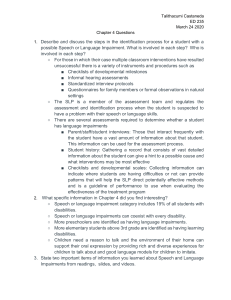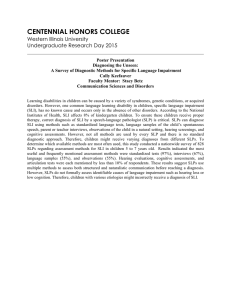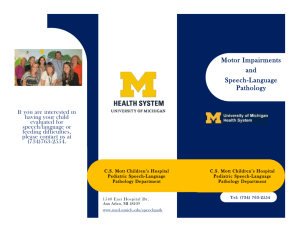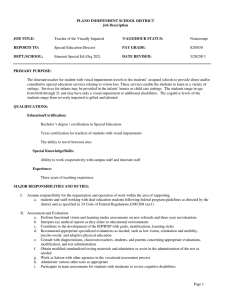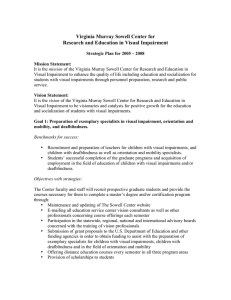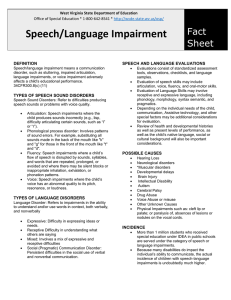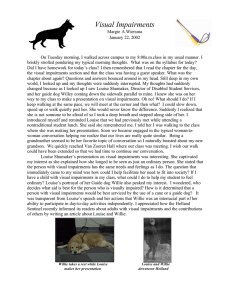Chapter 6: Intervention for Children with Language Impairments
advertisement
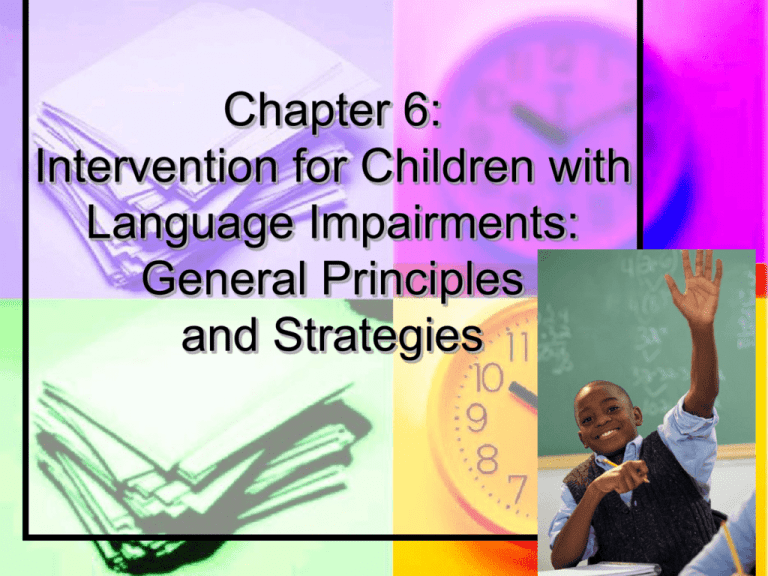
Chapter 6: Intervention for Children with Language Impairments: General Principles and Strategies I. General Principles of Intervention for Children with Language Impairments** Specific language impairment is a primary language impairment Language impairment can also be a secondary condition Many intervention techniques apply to children with both primary and secondary language impairments (LIs) Purposes of Intervention** The overall goal of intervention is for the child to express and comprehend language as normally as possible in academic and social situations Four specific purposes of language intervention are: Basic approaches to language intervention include :** Functional approach Developmental or normative approach A combination Using Reinforcement in Language Therapy** Positive reinforcers help LI children language skills Primary or secondary positive reinforcers II. Specific Treatment Techniques** Focused stimulation Incidental teaching Self talk Parallel talk** Mandmodel (elicited imitation) Extensions Other specific techniques include:** Recasting Joint routines Joint book reading Using sabotage** Modifying linguistic input (pp. 202-203) III. Facilitating Generalization of Treatment Targets to Other Settings** In order to help children generalize their language treatment targets to settings outside the clinic, SLPs must vary the Settings (classroom, playground, cafeteria) Stimuli Interlocutors It is important to connect with significant others in the child’s environment…** These significant others include teachers and caregivers Caregivers include:** Parents Grandparents Daycare providers According to Generations United, 2012**: More than 6.7 million American children live in households maintained by grandparents or other relatives Approximately 2.5 million grandparents report that they are the primary caregivers for children It is important to work with classroom teachers… IV. TEACHING VOCABULARY** Utilize classroom materials (math, language arts, social studies, etc.) 5th grade math vocabulary:** When teaching vocabulary… Have the children…** Draw pictures of new words/ concepts that they learn I have students bring their language arts books to therapy… We pick out 1-2 key words to discuss and draw We worked on morphological awareness (plurals) with new vocabulary word cloaks 3rd grade 5th grade Midnight Ride of Paul Revere More pictures…. One nice idea…** Have children keep dictionaries of new words Write word definitions, draw pictures You review all this with them V. INCLUDING LITERACY GOALS** Children who speak English as a second language are often at risk So are low-SES children We can help young at-risk students by supporting them in areas such as:** Phonological awareness Reading comprehension Reading fluency (wpm) This can be done with…** Students already on our caseloads At-risk students who are not yet on IEPs We support them in the classroom setting One of my favorite ways to support reading comprehension: **Of To the in and is a you That it he was For on are as With his they I At be this have from VI. ADOLESCENTS & CELL PHONES: INTERVENTION PRINCIPLES** Conti-Ramsden, B., Durkin, K., & Simkin, Z. (2010). Language and social factors in the use of cell phone technology by adolescents with and without language impairments. Journal of Speech, Language, and Hearing Research, 53, 196-208. This study looked at:** Adolescents with SLI A recent survey of teenagers in the U.S. showed that 80% had a cell phone; in the United Kingdom, 90% of teens have a cell phone Adolescents with SLI… However, it was found that: Treatment implications: VII. HELPING STUDENTS AVOID BEING BULLIED** Bullen, D. (2012). Spreading the word: SLPs work to raise awareness about bullying in the schools. ADVANCE for SLPs, July 23, 2012 94% of students with Asperger’s are bullied Armstrong, (ASHA Leader) “Serving children with emotional-behavioral disorders: A collaborative approach” Things to teach in these groups: With taunting comments, teach students to: Always remember that…** We support the development of social and academic language Our overall goal is to:** Help children succeed in their world
